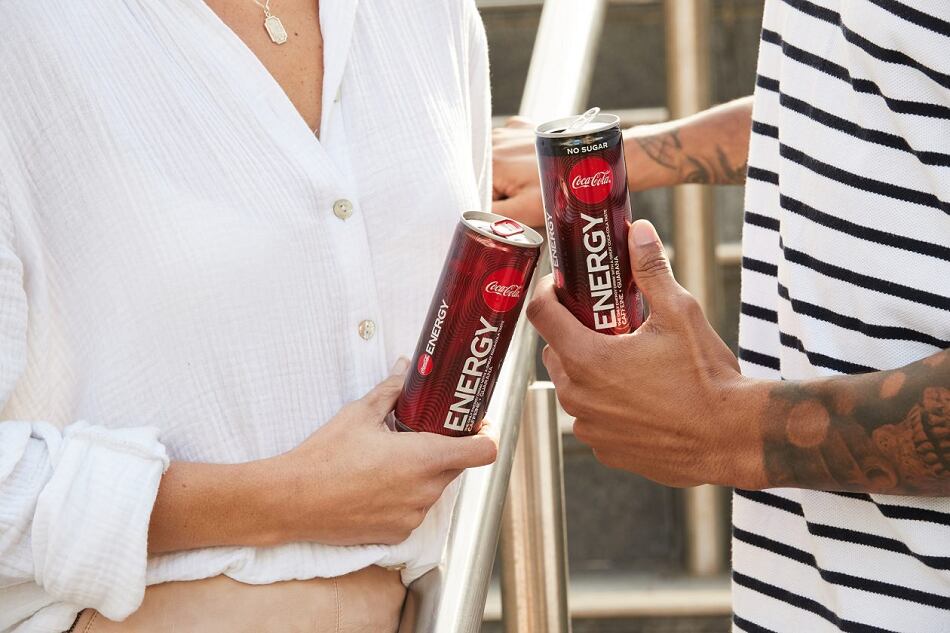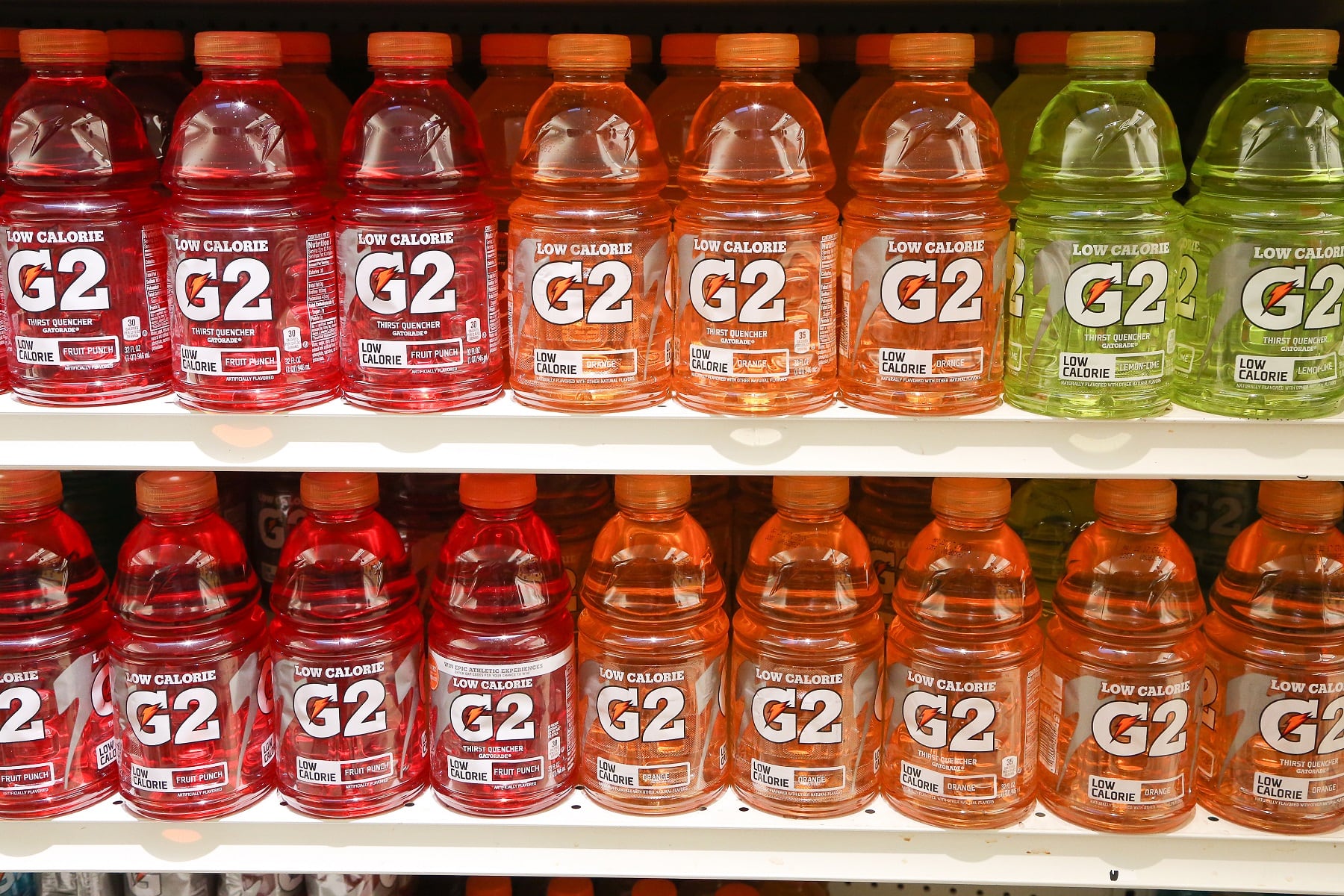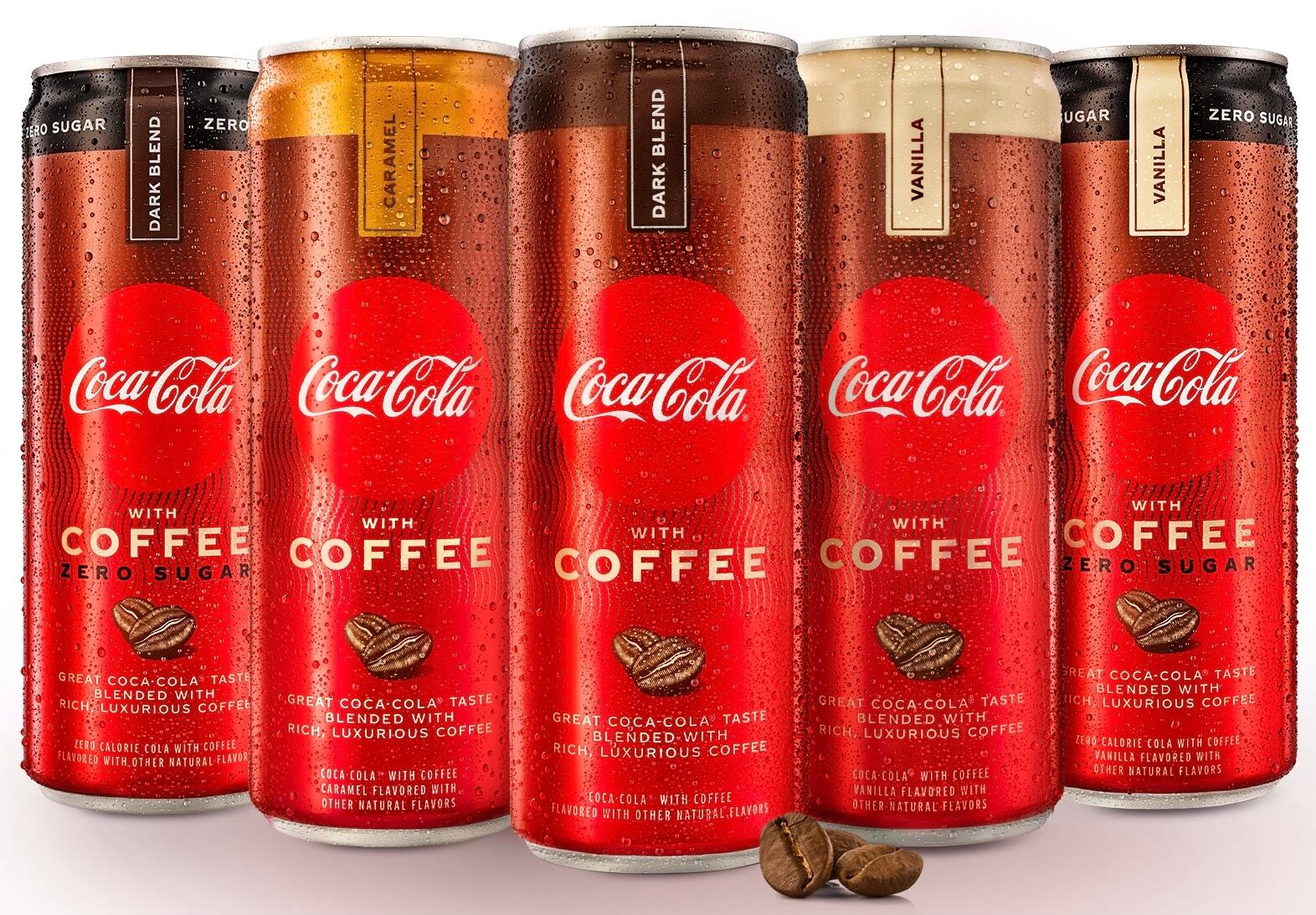Launched in the US in January 2020, Coca-Cola Energy was intended to bring new consumers to the energy drink category, which had been registering 5% year-over-year annual sales growth.
Coca-Cola debuted four varieties: Coca-Cola Energy, Coca-Cola Energy Cherry – a flavor available exclusively in the US – and its zero-calorie counterparts packaged in 12-ounce slim cans. The products contained 114 mg of caffeine (three times the amount of regular Coke or roughly the equivalent of a 12-ounce drip coffee) and the familiar taste of Coke.
But early sales result showed that consumers weren't flocking to the energy drink that touted the same flavor profile of original Coca-Cola. According to data reported by Beverage Digest, Coca-Cola Energy accounted for 0.7% of US energy drink sales (compared to Red Bull's roughly 25% share and Monster Energy's 15% market share in 2020, according to Statista).
“As we emerge stronger from the pandemic, our strategy is focused on scaling big bets across a streamlined portfolio and experimenting in an intelligent and disciplined manner. An important component to this strategy is the consistent and constant evaluation of what’s performing and what’s not... It is for that reason we’ve made the decision to discontinue Coca-Cola Energy in North America," a Coca-Cola spokesperson told FoodNavigator-USA in an email.
'We need to be disciplined with those that don’t get the traction required for further investment'
However, the rest of Coca-Cola's sparkling soft drinks portfolio has performed favorably in at-home channels and will be the focus for the company moving forward, noted Coca-Cola.
"As we scale our best innovations quickly and effectively like AHA and Coca-Cola with Coffee, we need to be disciplined with those that don’t get the traction required for further investment," said Coca-Cola.
As for the future of the Coca-Cola Energy in other markets where the brand is sold in 25 other countries, Coca-Cola's spokesperson said, "Coke Energy is considered a regional brand, and it will continue in select markets around the world, most notably in Europe."
Poor timing, clashing brand identity?
Given all the resources at the global beverage giant's disposal to launch a new product into market, why is it that Coca-Cola Energy barely made it past the starting line?
"I think this is a case of poor timing more than anything else," Howard Telford, head of soft drinks research at Euromonitor, told FoodNavigator-USA.
While the slowdown of away-from-home consumption impacted the energy drink segment to an extent, the category still performed well in 2020, Telford said, demonstrating that consumer demand for energy drinks is alive and well. According to Statista, the US energy drink segment registered 10.5% sales volume growth in 2020.
Failing faster?
He added: "The energy segment in North America held up remarkably well, with Monster gaining share in recent months. But this is a very competitive category, where space is limited," he said.
"Given Coca-Cola’s more disciplined approach to innovation in the past year, this might be a case where ‘failing faster’ is the best alternative."
Aside from declines in away-from-home traffic creating a challenging environment to introduce new products last year (Coca-Cola Energy's go-to-market strategy relied heavily on the c-store channel when it was introduced to the US market), Telford notes, brand identity may have also contributed to Coca-Cola's unsuccessful entry into the energy drink category.
"Particularly for a brand like Coke Energy, I suspect it might have been caught in the middle between Coca-Cola’s refreshment identity and this new, functional proposition that perhaps wasn’t immediately clear," said Telford.



